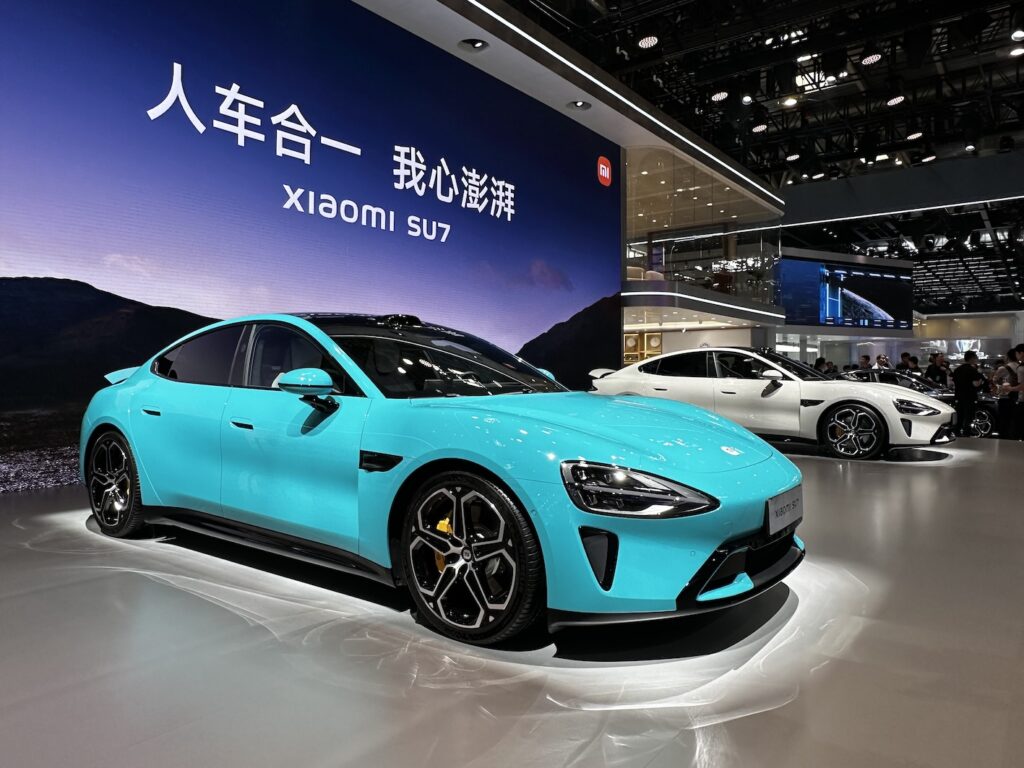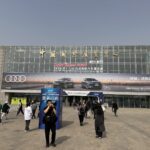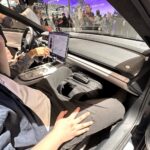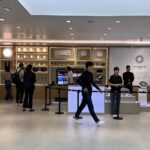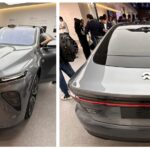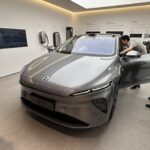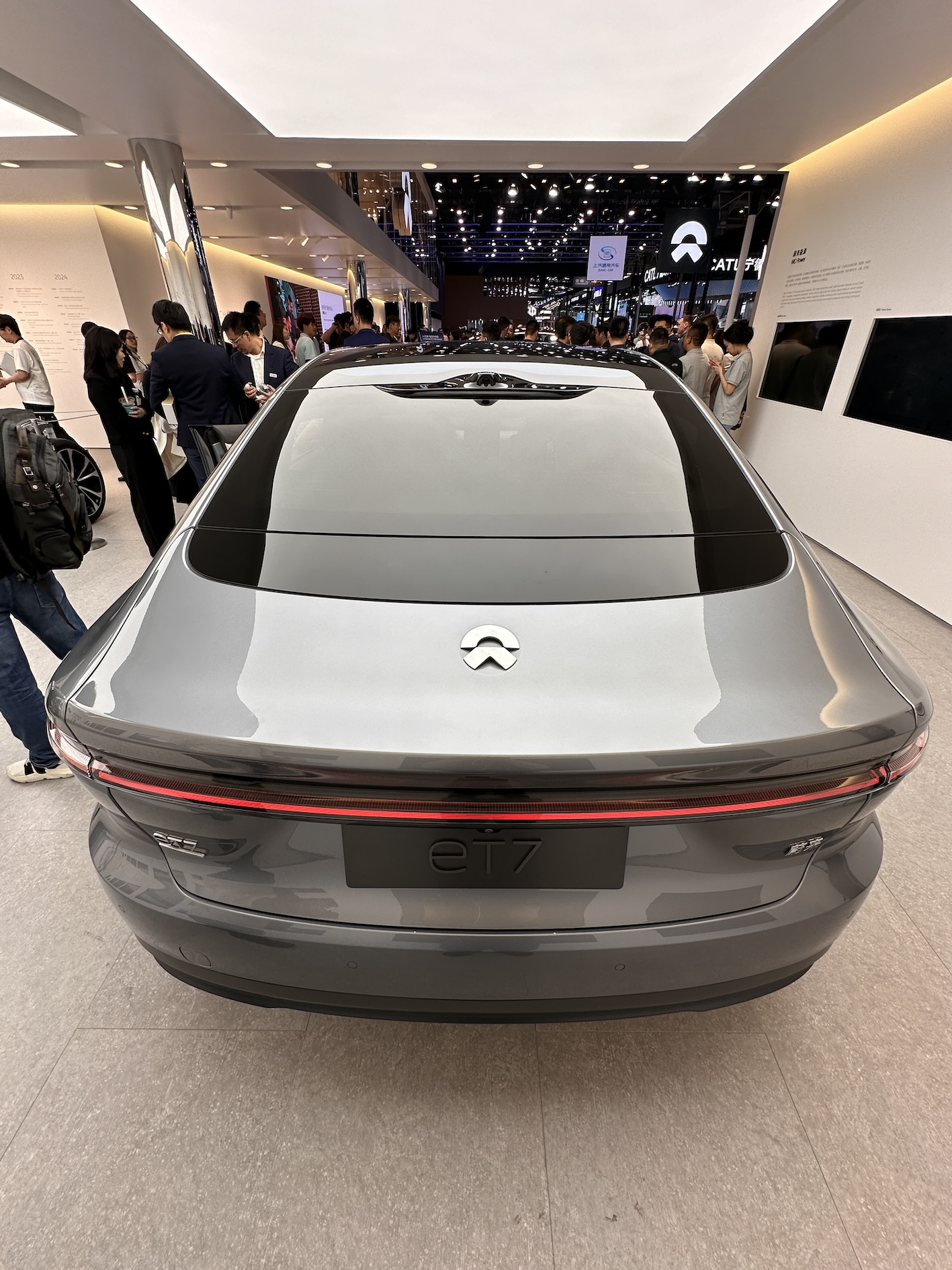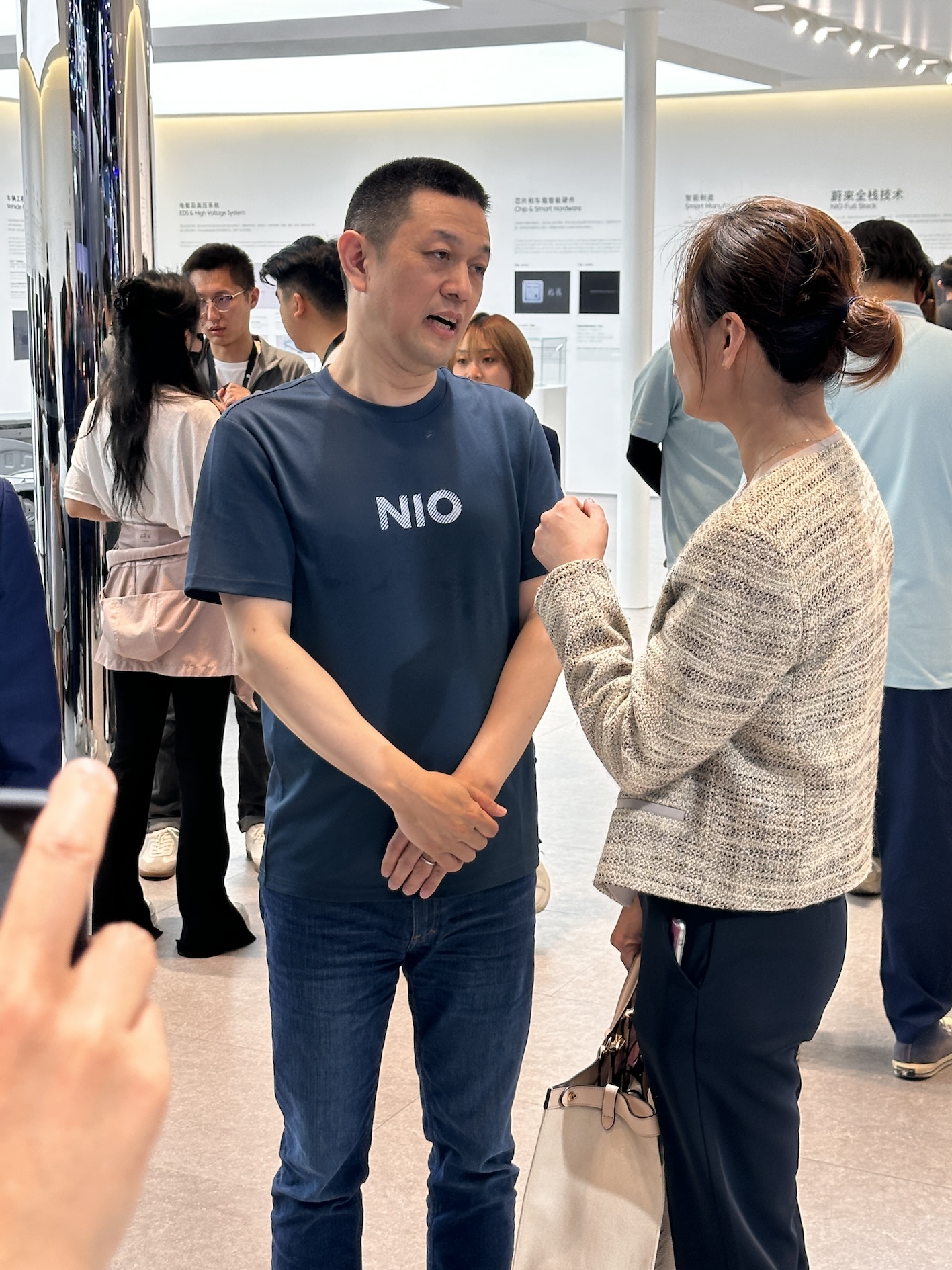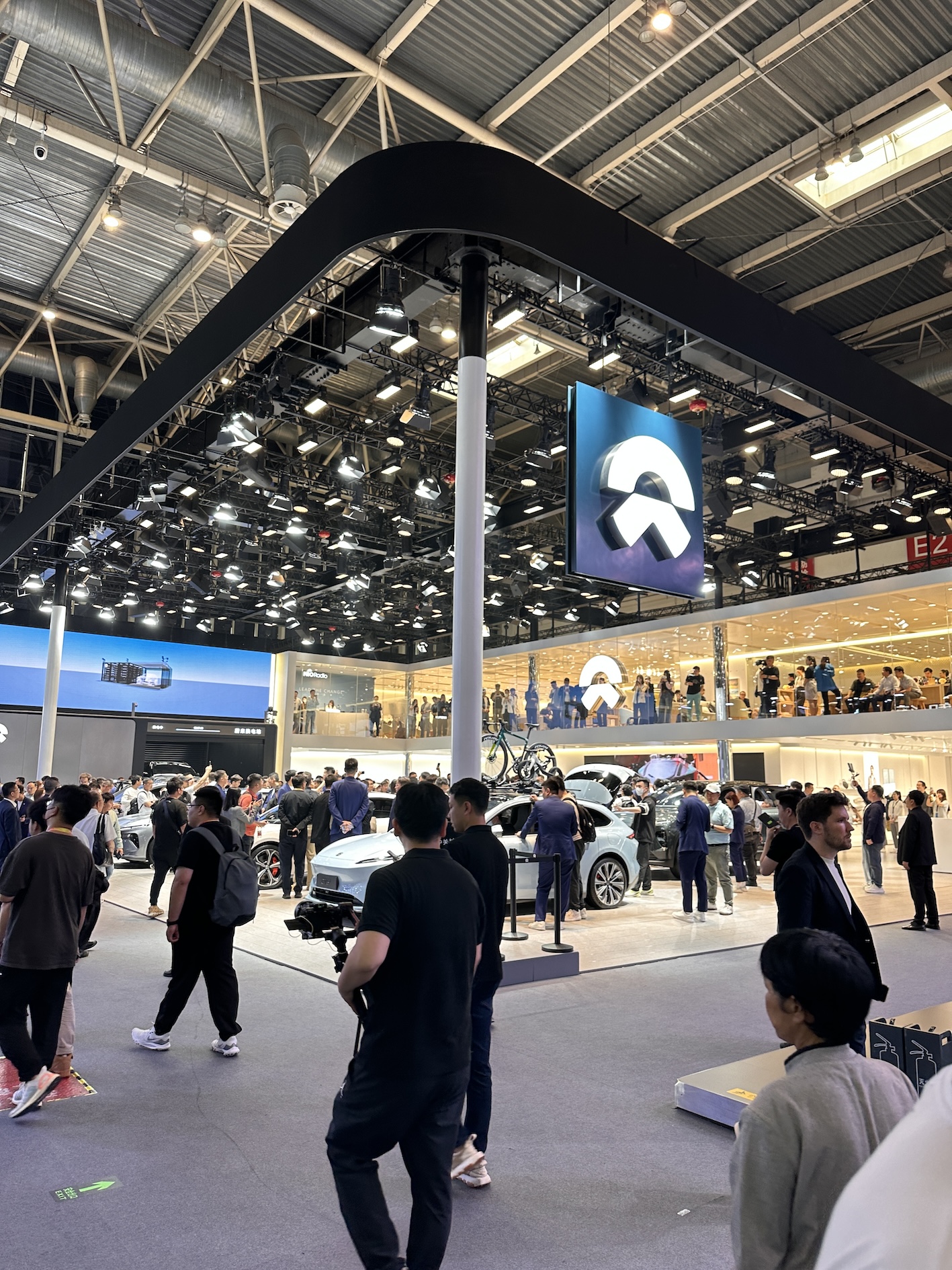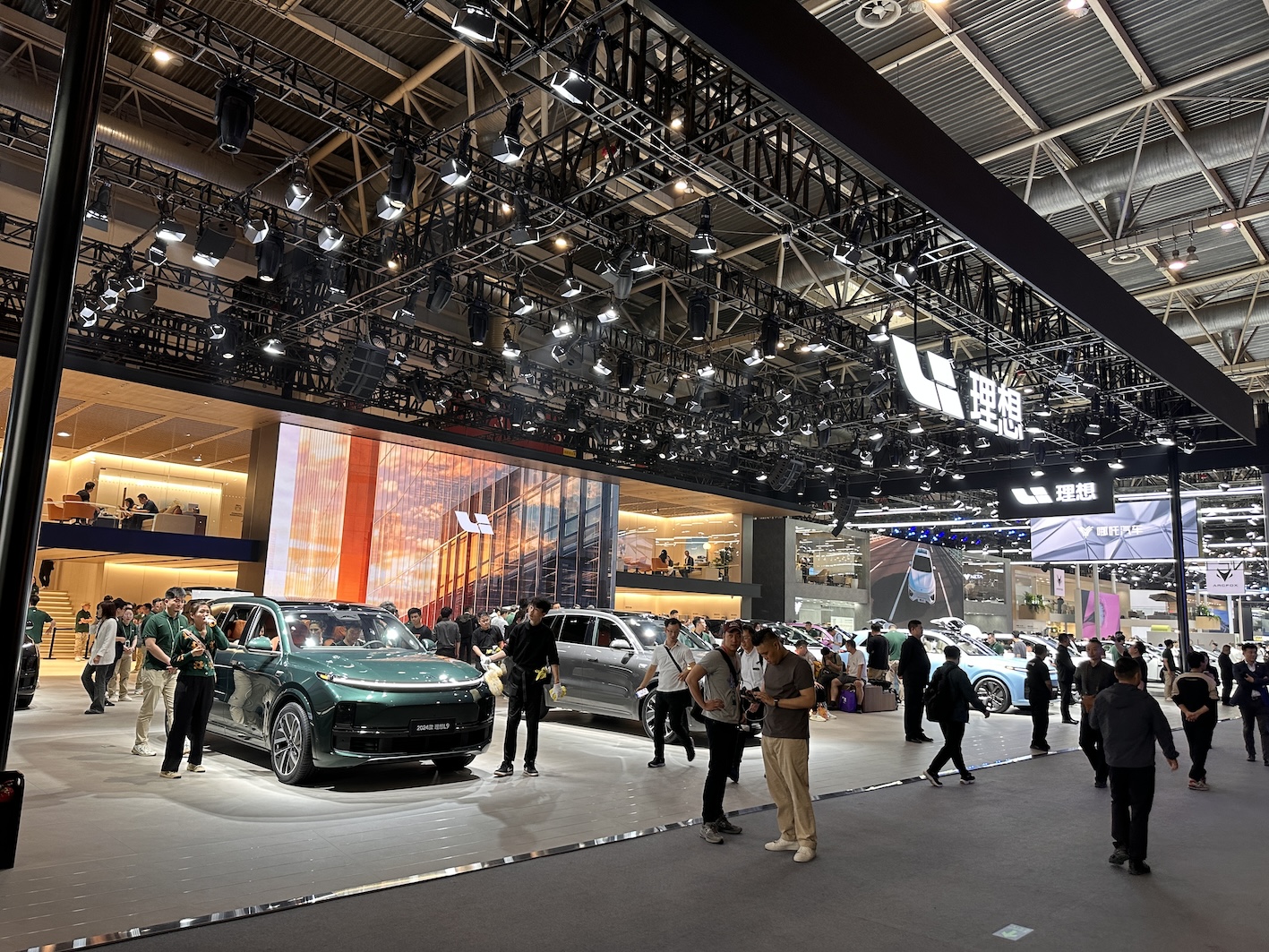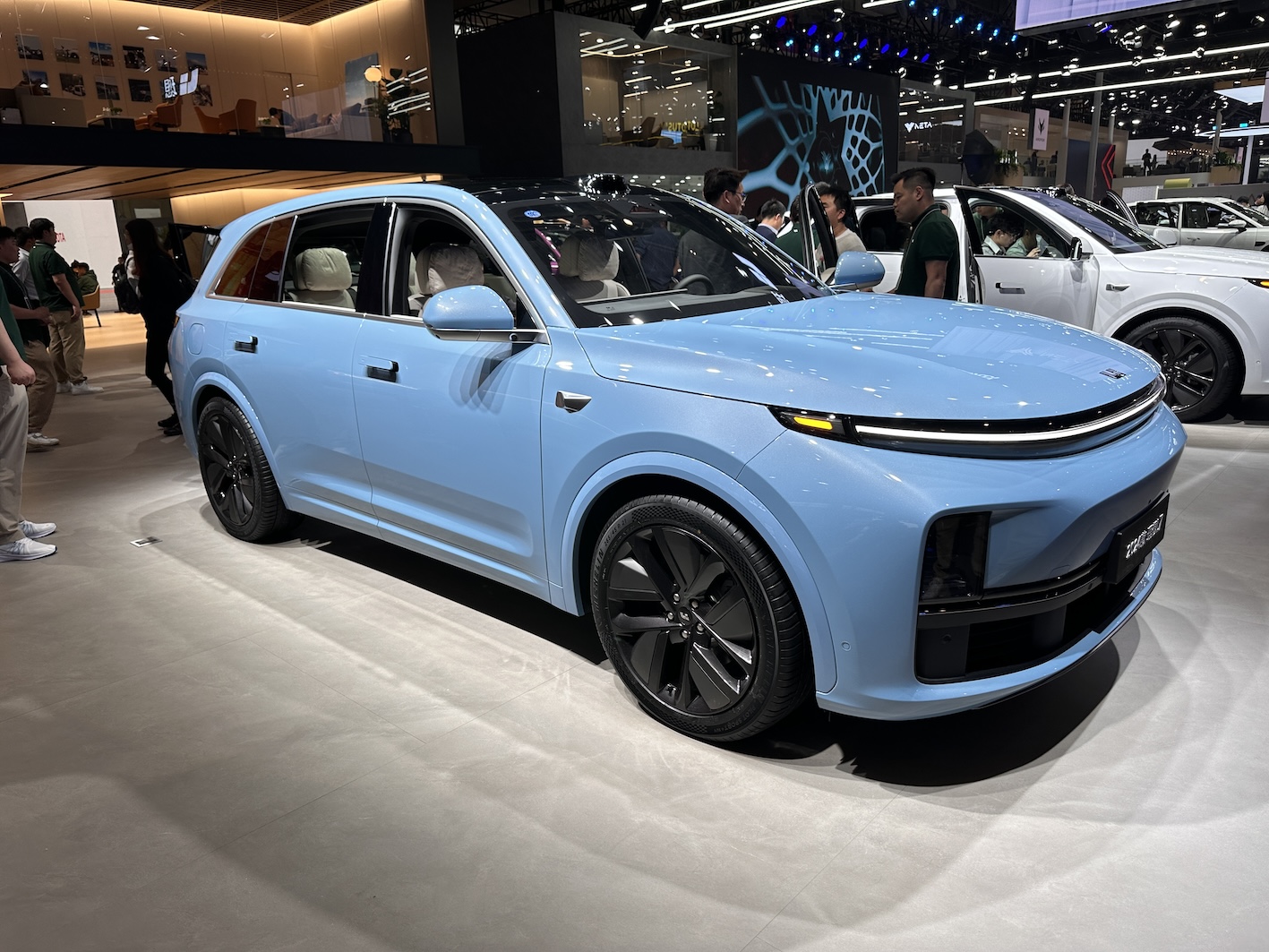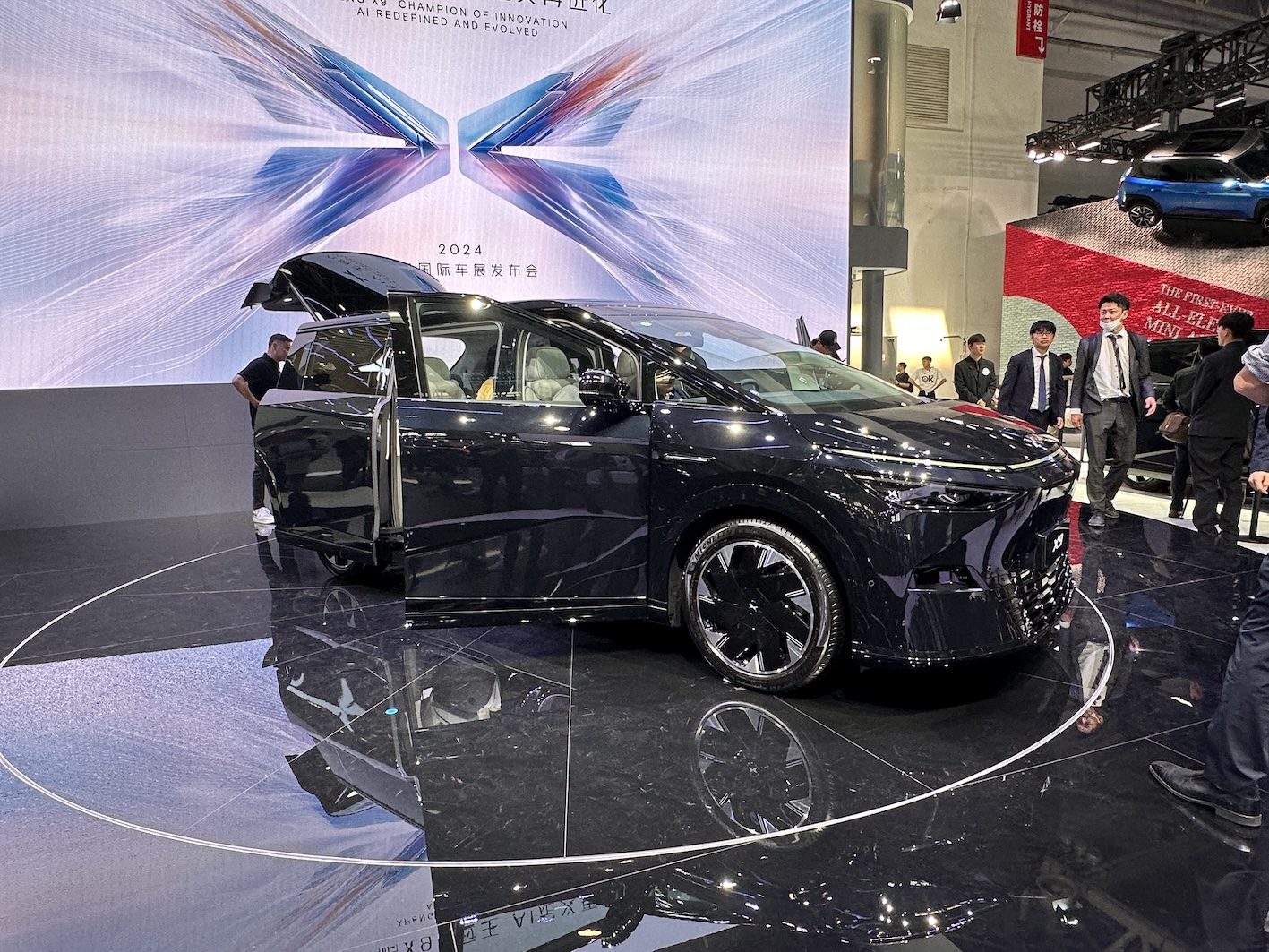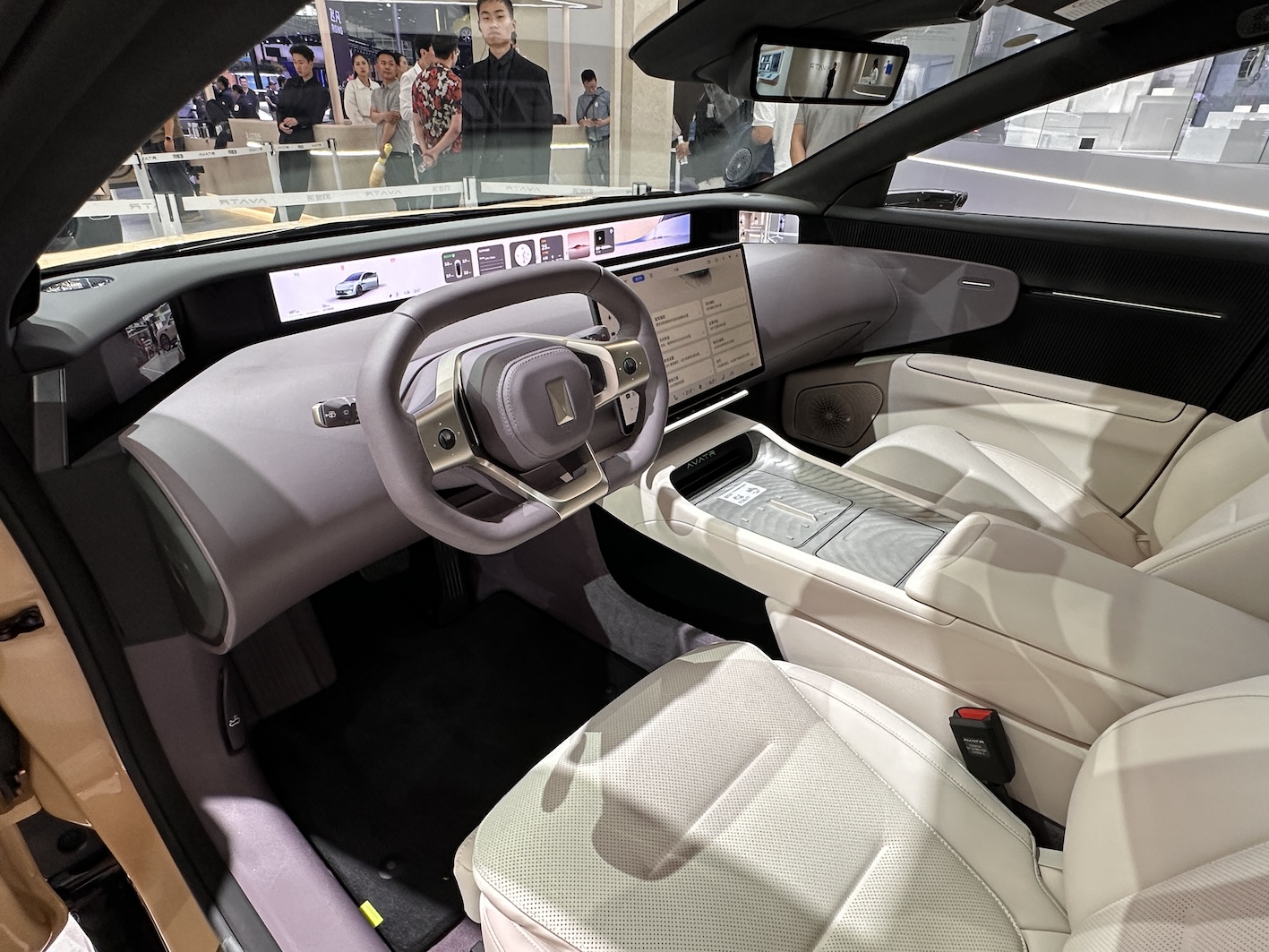目次
2024年4月25日から中国北京市郊外の中国国際展覧中心(中国国際展覧センター)「順義館」で第18回北京国際汽車展覧会(北京国際モーターショー)が開催された。英表記ではBeijing International Automotive Exhibition なので本来は北京国際オートショーと表現するのが適当かもしれない。
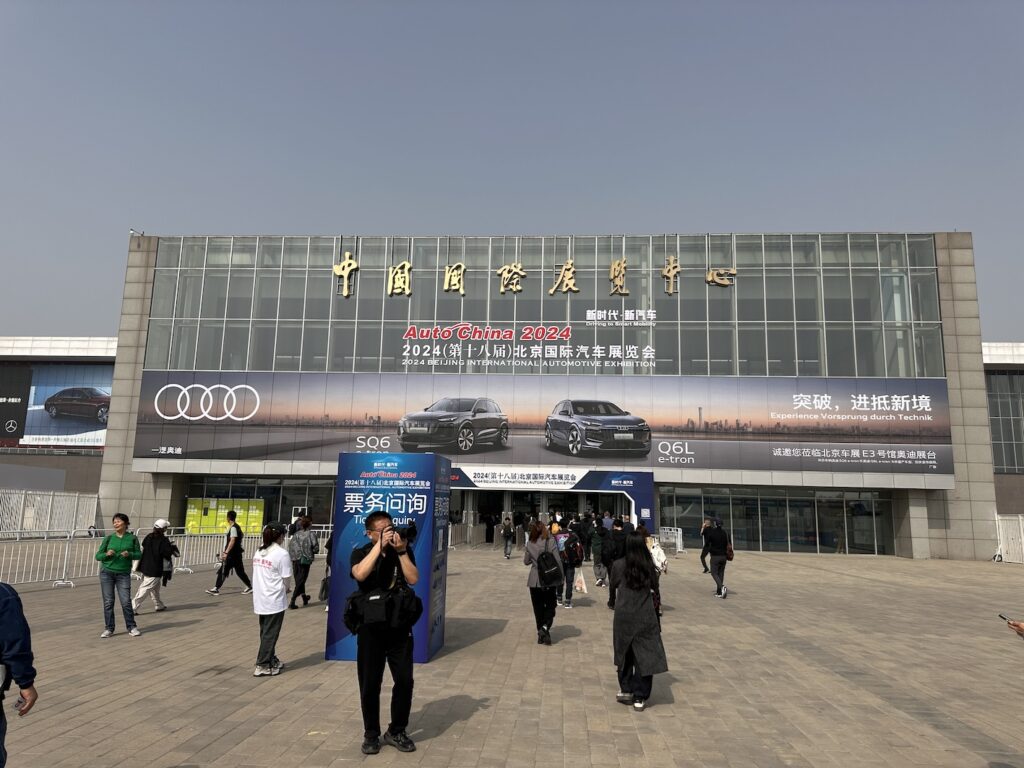
4月25日と26日はプレスデーのはずなのではあるが、とにかく人が多い。おかげでクルマ全体をじっくりと見ることができないような状態だ。さらに多いのが動画をSNSへあげるインフルエンサー達の取材。この人たちは自撮りやカメラマン付きの動画でクルマに張り付いてレポートをしているので、人物が入り込まないクリアな写真を撮ろうとするのは至難の業だ(そのチャンスを待つまでとにかく時間がかかる)。
特にインテリアの写真はほぼ撮影が困難だ。会場にある車のドアは閉じられてはいない。そのために一旦クルマに乗り込むと車内のインフォテインメントを一通り試してみるまでは降りてこない。なかにはその様子をスマホの動画で撮り続ける人もいる。とにかく、それほどに人々の自動車への関心が高いのが今の中国である。
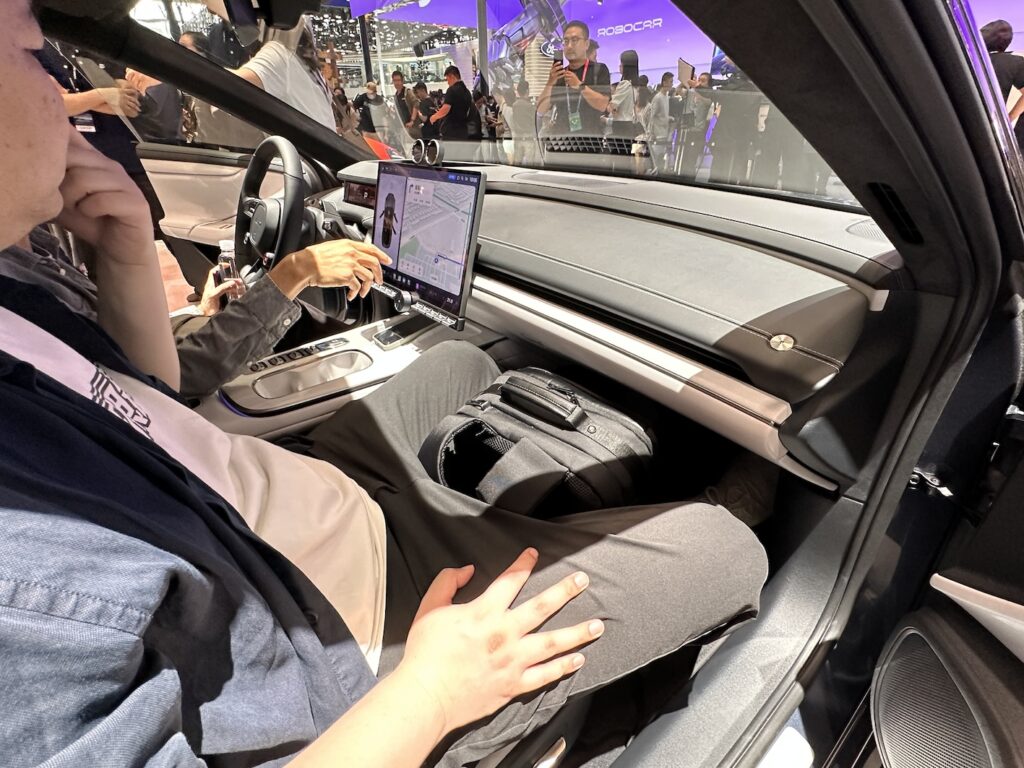
新たなビジネススタイル
今中国は新エネルギー車(BEV、PHEV、燃料電池車)の販売台数が全体の3分の1を占める。政府の新エネルギー車への補助金がなくなった影響でEVの販売の勢いが鈍化したと言われているが、新興メーカーがまだまだ立ち上がってくる。さらには既存の自動車メーカーが車種傾向別に数社のアライアンスを組んでサブブランドを立ち上げる傾向も強まり、地元の関係者でもすべてのブランドを知ることが追いつかないという。
今回のショーの目玉は世界第3位のスマートフォンメーカーのXiaomi (小米=シャオミ)だ。スマホをメインとする電子機器メーカーだがEVに参入し、3月にEV販売を開始したが1カ月で75,000台の受注を超えた。会場では来場者が多すぎてブースエリアへの入場もブース周囲をグルリと並ばねばならないほどの大人気である。Xiaomiのブランドマークを見るとそれはスマートフォンのアプリそのもので、Xiaomiは中国の若者の1番の関心事のようだ。なにより価格が400万円台〜600万円台ほどに抑えられておりその点からも若い世代への訴求力が非常に強く、その心の掴み方も実に現代的である。
Xiaomiのブースの奥にはスマートフォン売り場のようにスマホが並び、Xiaomi のOSについての展示もある。同じようにインターネット自動車情報サイトBitAuto創業実績を持つ起業家が2014年に立ち上げた中国版テスラと呼ばれるNIOも若い人たちの人気の的だ。こちらは高級車路線ではあるが、その特徴はどちらも従来の自動車メーカーのイメージを刷新して「ライフスタイルを形作るブランド」としているところが若い層に受け入れられている要因だという。

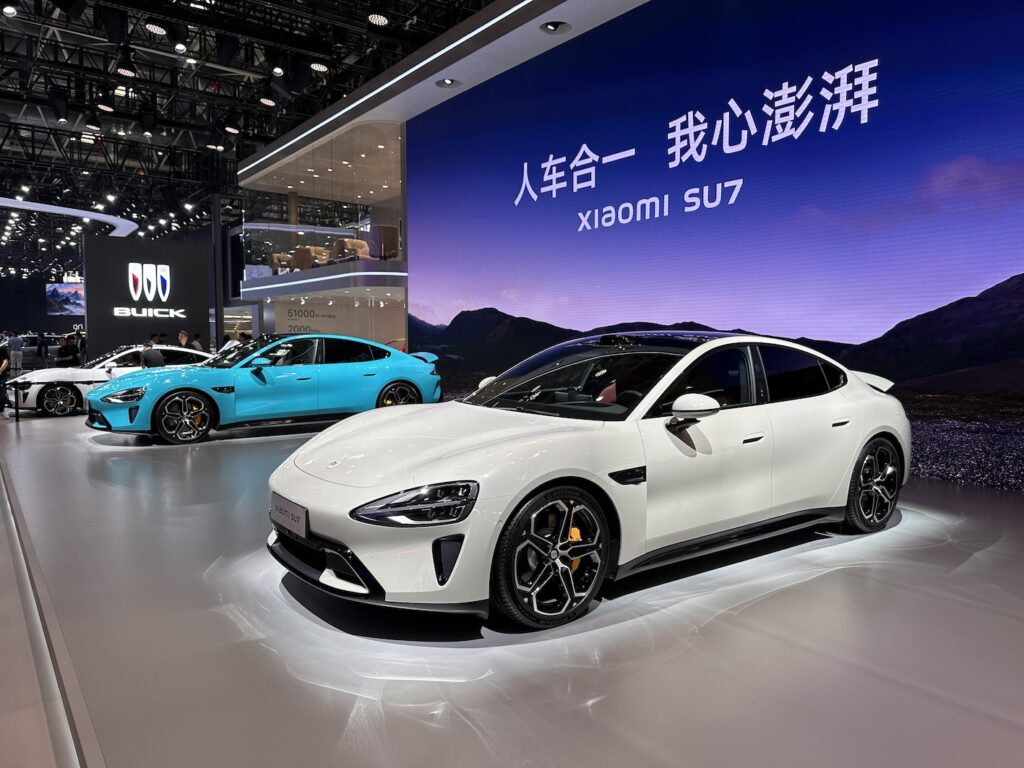
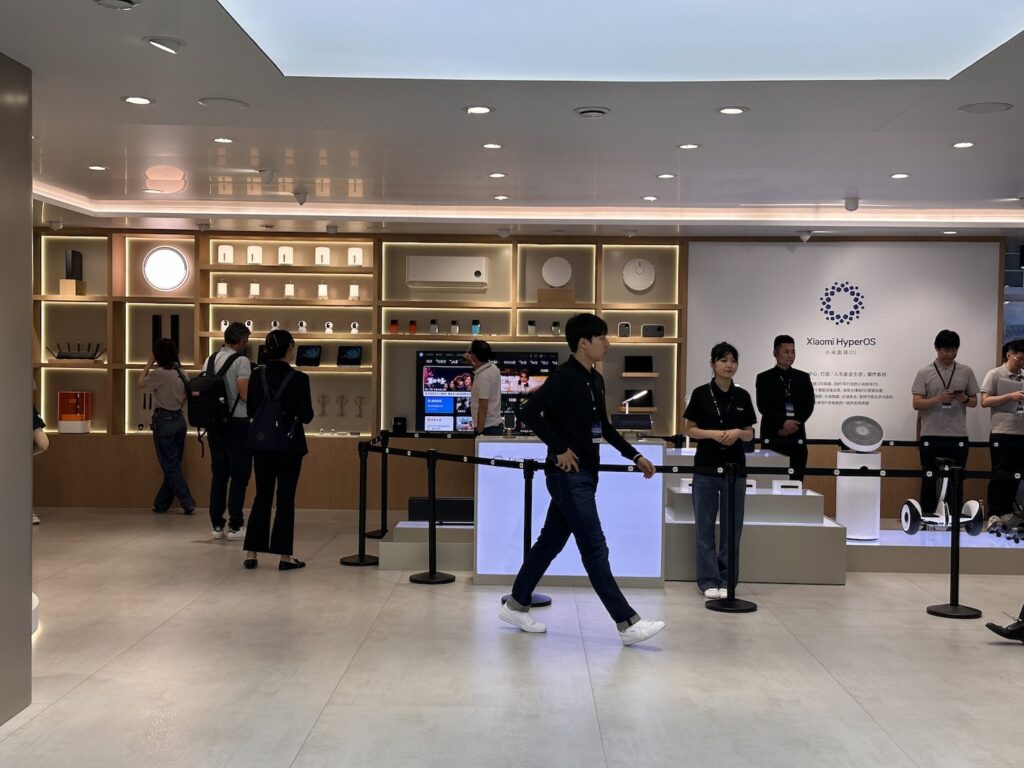
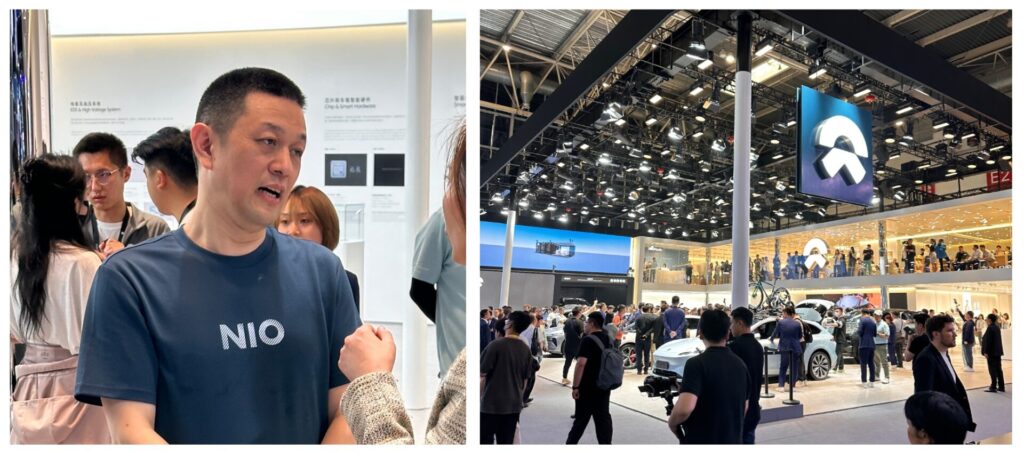
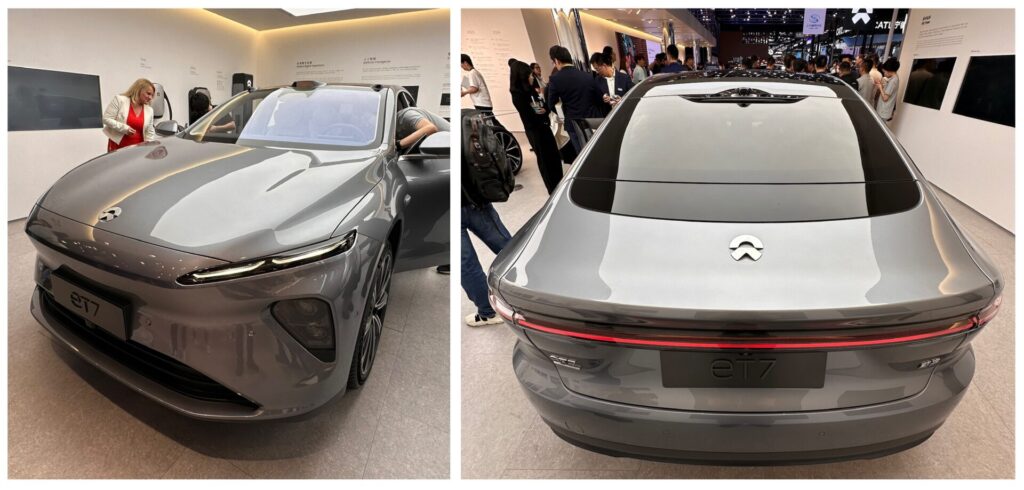
NIOとともにXpeng(小鵬汽車=シャオペン)、Lixiang(理想汽車=リソウ)もEV市場を引っ張る主要なブランドだ。この3社はほぼ時を同じくして2014年ごろに創業しEVブームを牽引しており、経営も積極的だ。
創業者達は自動車情報サイトAutohomeを立ち上げていたり、Alibabaの幹部だったり、これまでの自動車メーカーとはクルマに対するアプローチが違っていて、より消費者の気持ちに寄り添った商品作りをしており、自動車を販売するがコンシューマービジネスとして車を捉えているところが強みで既存の自動車会社をリードしている。
そしてこの3社はともにTencent(テンセント)、Alibaba(アリババ)、Meituan(美団)というIT企業と組みさまざまなエンターテイメントコンテンツも供給する。このように既存の自動車メーカーとはそもそものクルマづくりの根底が違っておりクルマを軸としてユーザー向けのサービスビジネスを展開している。中国ではインターネットやソフトウェアをリードするIT企業が世の中への影響力を強く持っており、前述のように新たな起業家によってEVの概念が形作られている。
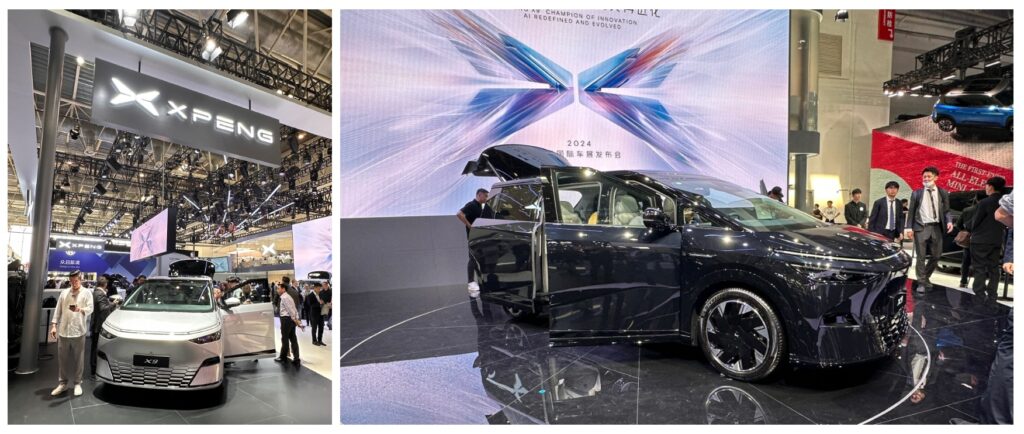

中国ブランドのデザインの特徴
中国ブランドの商売の戦略は、消費者の憧れのクルマに近付け、それを購買しやすい価格で提供する、というシンプルな商品戦略であるということだ。そのため各車の外観がとても近く、なかなか見分けがつかない。どのクルマも同じような範疇の顔つきであり、EVはグリルレスであることも影響し、もはやどのクルマを選んでも外観による差は大きく感じられないような状況になっている。
しかしそのスタイリングをまとめ上げる力量はすでに先を進んでいた欧米日メーカーとまったく遜色がない。あるいは追い越されているブランドもありそうだ。中国自動車メーカーの多くは早くから海外にデザイン拠点を持ち、デザインスタッフはグローバルであり、多くの会社でデザインダイレクターもグローバルな人材が登用されている。望む結果を導き出すためには最良で最短の方法を採るという非常にわかりやすいシンプルな経営方針をとっており、その手法は奏功している。
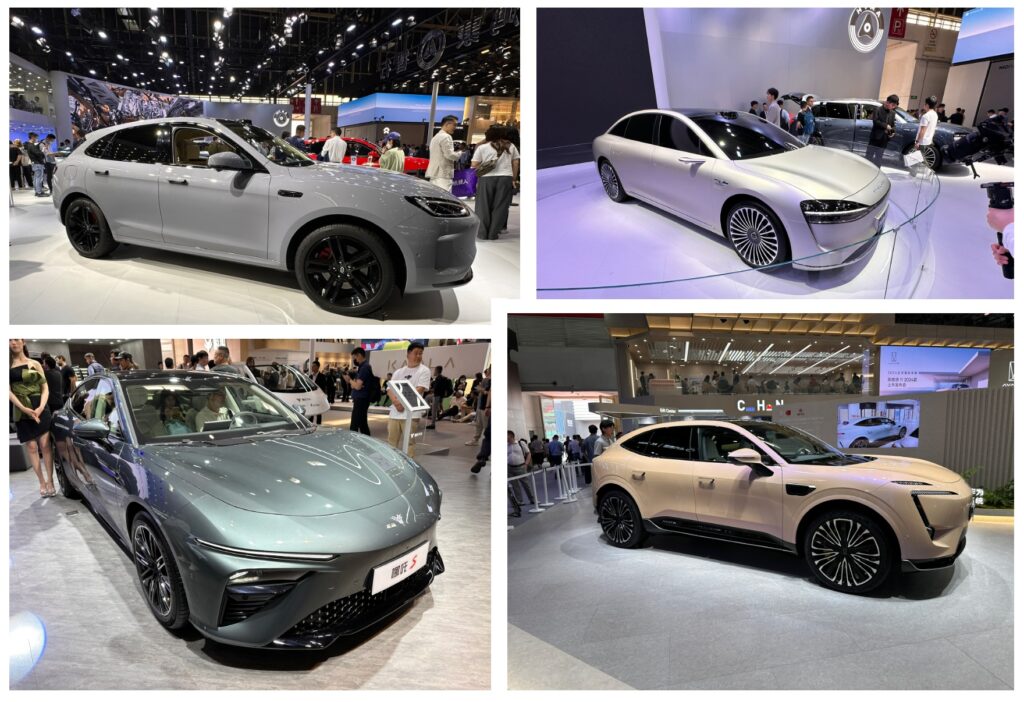
そして彼らもこれからの課題は差別化にあるとわかっている。100社を超えるメーカーが商品を作っているために供給過剰に陥り差別化とブランド構築ができなければ価格勝負の厳しい戦いが待ち受けていることを理解しており、生き残りを賭けたブランド戦略がこれから始まろうとしている。プレスデイ初日の晩に開催されたCar Designer’s Nightにおいてデザイナー達からも異口同音にその意気込みが聞かれた。
事実、今回の北京ショーにおいてもいくつかのクルマは独自のスタイリングをトライしている様子が見えた。もともと力のある人材が集結しているのであるから、経営上のディレクションさえ明確になればさらに活性化されるはずだ。
とはいえ、生産技術視点で見ても、出来上がり完成品質として見ても、クルマの出来栄えレベルは非常に高い。さらに外観だけでなく内装のCMF観点からの仕上がりも素晴らしい。
インテリアデザインのテーマ的には助手席まで連続するモニターさえあれば、というスタイリングが現状多いのは外観同様に課題だが、インテリア全体のトーンマナーも統一感がとれており各パーツのチリ合わせ的な基礎的品質には課題が見えない。ドアトリムのまとめ、シートのステッチなどとても綺麗に仕上がっており、一時よりも抑制の効いたデザイン表現など、グローバルに受け入れられる商品になっている。これらもエクステリアデザインと同様にこれから差別化へのトライが行われることは間違いがない。さらにイメージを崩さずにいかにしてコストダウンを図っていくかも重要な課題となるだろう。
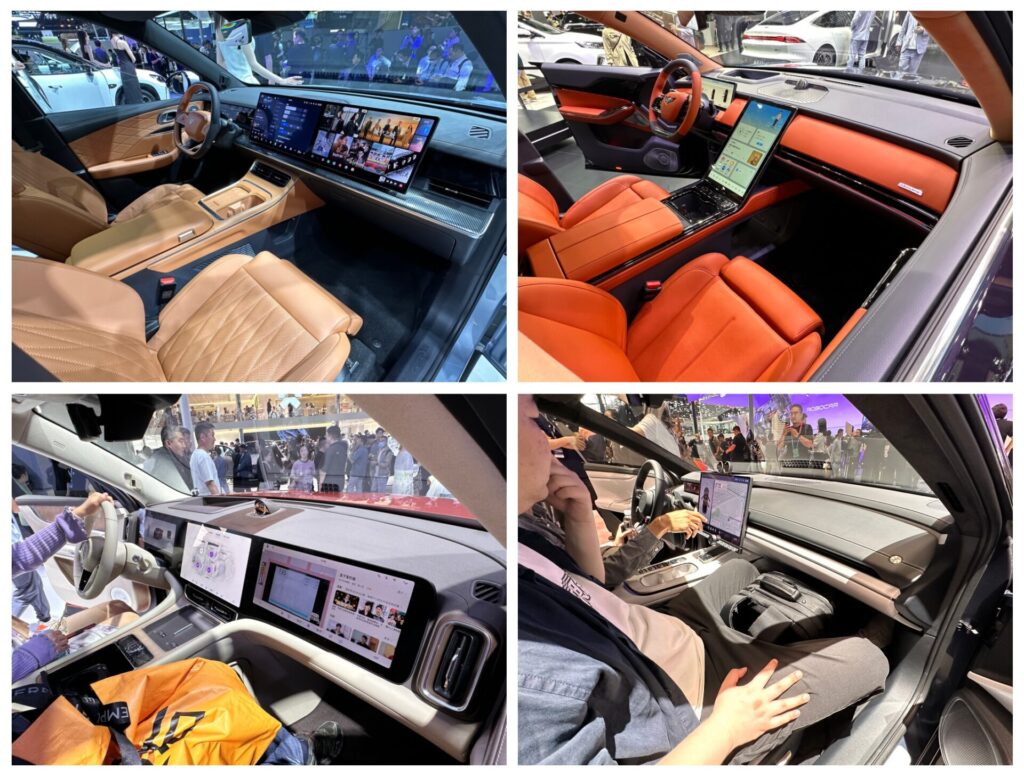
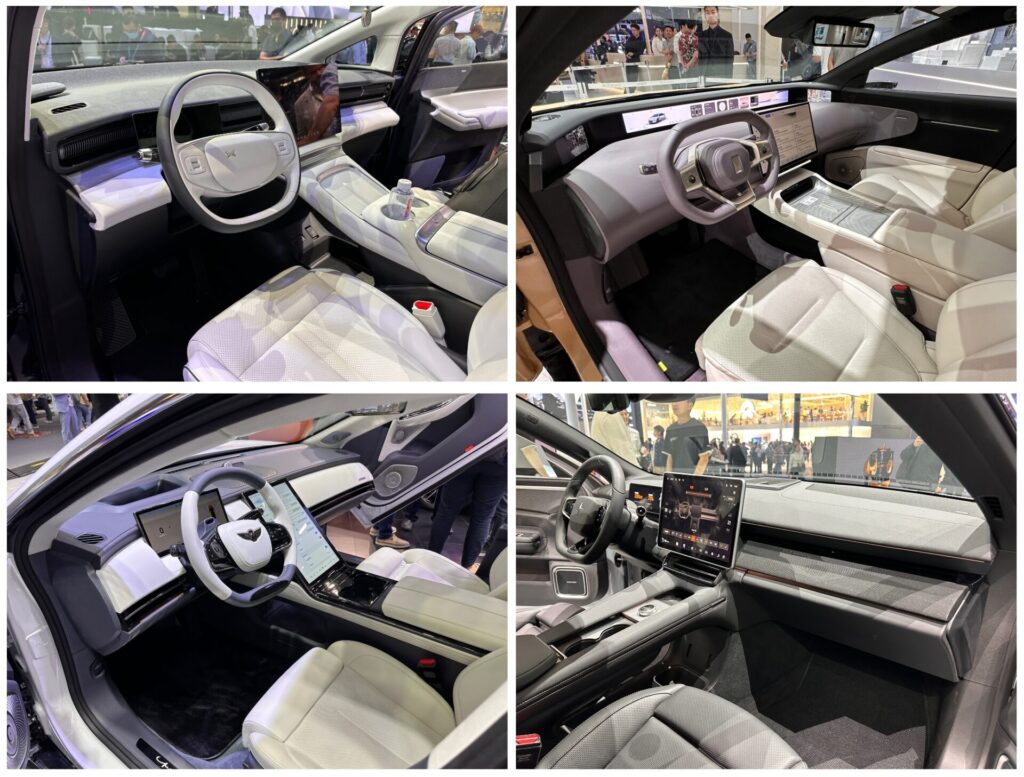
中国という一国でこれだけ多くの会社がこれだけ多くの車種展開を持ち、その仕上がりの品質と見栄えの高い車が生産できる実力を持っていることは大いなる脅威だ。しかし、先ほども触れたとおりEVの供給過剰の中国マーケットでは熾烈な生き残りの競い合いが始まっている。自動車輸出も日本を抜いて世界最大となったようにマーケットを世界に広げなければならない。欧米との経済摩擦などの要素を考えればその矛先は東南アジア、インドへ向けられることが容易に予想される。もちろんEV開発の遅れている日本市場も彼らの狙うマーケットに他ならない。
今回の北京モーターショーで改めて中国の本気度と底力を見た。
Beijing International Automotive Exhibition 2024 Design Report_01
World-class competence
The 18th Beijing International Automotive Exhibition was held from April 25, 2024, at the Shunyi Pavilion of the China International Exhibition Center in the suburbs of Beijing.

Although the 25th and 26th were supposed to be press days, there were just too many people. This made it impossible to take a good look at the entire car. Even more common was the coverage by influencers who posted videos on social networking sites. These people were reporting from right next to the cars, using selfies or videos with a cameraman, so it was very difficult for us to get clear photos of the cars without people in them (it took a long time to wait for the right opportunity).
It is almost impossible to take pictures, especially of the interiors. The doors of the cars at the event are not closed. For this reason, once they get into a car, they do not get out until they have tried all the infotainment features in the car. Some people even continue to take videos of the event on their smartphones. In any case, people’s interest in automobiles is that high in China today.

New Automobile Business Style
New energy vehicles (BEVs, PHEVs, and fuel cell vehicles) now account for one-third of total sales in China. It is said that the momentum of EV sales has slowed down due to the loss of government subsidies for new energy vehicles, but new manufacturers are still emerging. Furthermore, there is an increasing trend for existing brands to form alliances of several companies to launch sub-brands by vehicle type trend, and even local officials are unable to keep up with knowing all the brands.
The centerpiece of the show was Xiaomi, the world’s third largest smartphone maker. The company is an electronics manufacturer that mainly produces smartphones, but it has also entered the EV market. It began selling EVs in March and received more than 75,000 orders in one month. The Xiaomi booth was so popular that visitors had to line up in a circle around the booth to get into the booth area. Xiaomi seems to be the number one interest of young Chinese people, as the xiaomi brand mark looks like a smartphone application itself. In the back of the Xiaomi booth, smartphones are lined up like an electronics store, and the Xiaomi OS is also on display.
Similarly, NIO, the Chinese version of Tesla, launched in 2014 by an entrepreneur with a track record of founding BitAuto, an Internet car information site, is also popular among young people. Although NIO is a luxury car, it is characterized, along with Xiaomi, as a “brand that shapes lifestyles,” revamping the image of traditional car manufacturers, which is a factor in its acceptance by the younger generation.





Along with NIO, Xpeng and Lixiang are also major brands leading the EV market. These three companies were founded around the same time, around 2014, and have been leading the EV boom and are aggressively managed.
The founders of the three companies have different approaches to cars from conventional automakers, such as launching the car information website Autohome and being executives at Alibaba, and they create products that are more in line with the consumer’s needs. The company’s strength lies in the fact that it sees cars as a consumer business, even though it sells cars, and it leads existing car companies in this area.
These three companies have also teamed up with IT companies Tencent, Alibaba, and Meituan to provide a variety of entertainment content.
In this way, they are different from existing car makers in that they have developed their business for users with the car as the core of their operations.
In China, IT companies that lead the Internet and software industry have a strong influence on the world, and new entrepreneurs such as those mentioned above are shaping the concept of EV vehicles.


Design Features
The business strategy of the Chinese brands is a simple product strategy: to approach the cars that consumers admire and offer them at a price that makes them easy to purchase. As a result, the appearance of each car is very close and indistinguishable. The fact that all cars have similar faces and EVs are grille-less has also had an impact, so that no matter which car you choose, the difference in appearance is no longer perceived to be significant.
However, their ability to put together the styling is not at all inferior to that of Western and Japanese manufacturers who were already ahead of them. Some of the brands may have even surpassed them.
Many of the Chinese automakers have overseas design bases from early on, and their design staff is global, with many companies appointing global personnel as design directors as well.
They have a very straightforward and simple management policy of taking the best and shortest way to achieve the desired results, and this approach is working.

They also know that the challenge is to differentiate their products, and with more than 100 manufacturers producing products, there is an oversupply and if they cannot differentiate their products and build their brands, they will face a tough price war. The brand strategy for survival is about to begin. At the Car Designer’s Night held on the first evening of the press day, designers were unanimous in their enthusiasm.
In fact, some of the cars at the Beijing show were seen experimenting with unique styling. The company has already assembled a talented group of people, and if management direction can be clarified, the company should be even more energized.
Nevertheless, the level of workmanship of the car is very high, both from a production engineering perspective and as a finished product quality. In addition to the exterior, the interior finish from a CMF perspective is also excellent.
In terms of the interior design theme, many of the styling elements are such that all that is needed is a monitor that extends continuously to the passenger seat, which is a challenge, just as with the exterior, However, the tone and manner of the interior as a whole is consistent, and the basic quality of the parts is consistent. The door trims and seat stitching are very nicely finished, and the design expression is more restrained than at one time, making this a product that can be accepted on a global scale.
There is no doubt that these, as well as the exterior design, will be subject to further differentiation in the future. Another important issue will be how to reduce costs without compromising the image of the product.


The fact that so many companies in one country, China, have the ability to have so many different model lines and produce cars of such high quality and appearance of the finished product is a great threat.
However, as mentioned earlier, there is an oversupply of EV vehicles in the Chinese market, and a fierce competition for survival has begun.
As China has overtaken Japan to become the world’s largest exporter of automobiles, it must expand its market to the rest of the world.
Considering factors such as economic friction with Europe and the U.S., it is easy to predict that the brunt of this competition will be directed toward Southeast Asia and India. Of course, the Japanese market, which has lagged behind in EV development, is also a market they are targeting.
At this year’s Beijing Motor Show, we once again saw China’s seriousness and underlying strength.

